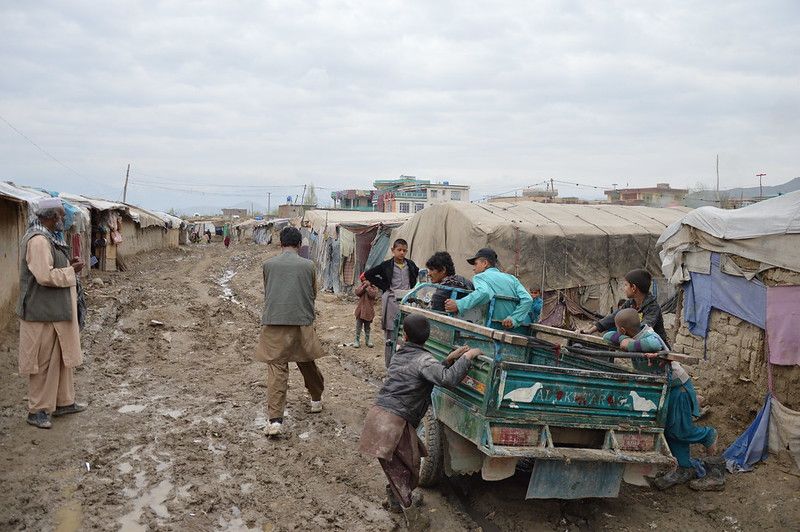Immigrants are far more likely to live in poverty than people of Danish ethnicity, according to the 2021 Indvandrere i Danmark report released by Danmarks Statistik. Poverty is defined as an income of less than half the national median.
Some 19 percent of people from non-Western countries and 9 percent of people from Western countries live in poverty – compared to just 3 percent of people of Danish origin.
For the groups’ respective descendants, the likelihood barely changes at 19 and 8 percent.
Unemployment mostly to blame
Danmarks Statistik blamed unemployment for the figures, which discounted students and the very wealthy. “More immigrants and descendants from non-Western countries are on public support,” it noted.
Among the other findings, the report reveals that 72 percent of the children of non-Western immigrants attended childcare in 2019 (ages 0-5) – a rise of 4 percentage points on 2017.
Some 58 percent of 30-year-old non-Western male descendants had a vocational qualification in 2020 – up from 45 percent in 2010.
Good year for poverty levels
In related news, the number of children living in economically vulnerable households has fallen from around 100,000 to 69,000 over the last year – an improvement mainly attributed to the government’s decision to unfreeze holiday money last year – according to the Økonomisk Sårbare report published annually by Danmarks Statistik.
A vulnerable household is generally defined as one that is not able to pay its bills on time, and the national proportion has fallen from 10.7 to 6.9 percent. Furthermore, the percentage of households that would fail to pay an unforeseen expense of 10,000 kroner has fallen from 25.2 to 19.4 percent.
The improvement has also been attributed to the introduction of the temporary child allowance.
Youth, unemployment, bad health = likely lower satisfaction with life
Younger people tend to be more dissatisfied with life than those aged over 30. The 16-29 age bracket said their general satisfaction with life was 6.9/10 compared to 7.4 among the over-30s.
The overall satisfaction rating of 7.3 was down from 7.8 in 2018, and there is no discernible difference between men and women. In sparsely populated municipalities, the rating was 7.5 compared to 7.2 in densely populated municipalities.
Employment is a major factor, as the unemployed (5.8) and students (6.8) had low ratings compared to high-earners (7.8), the employed (7.6) and retirees (7.8). Low earners rated at 6.8.
Those with good health rated their lives at 8.3. Those with reasonable health scored 6.9, those with poor health 5.2, and those with very poor health 4.0.
Record number of applications for Christmas aid
A record number of families with children have applied for Christmas aid this year. The increase has been attributed to a large increase in the price of electricity and groceries. Mødrehjælpen, which tends to give out 500 kroner per child, has reported over 14,000 applications – almost double the 7,052 it received last year. Around 15,000 families have applied to the Red Cross for help, 8,600 to Blå Kors, and 16,784 to the Dansk Folkehjælp. Respectively the organisations hand out 800, 600 and 1,800 kroner respectively to successful applicants. There are no guarantees that applications are successful.
Heavy investment in storing CO2 in oil fields
The Ministry of Climate, Energy and Supply has confirmed that 270 million kroner will be spent on storing CO2 in oil fields in the North Sea. Some 197 million was awarded to Project Greensand in the Harald field, which will be overseen by INEOS Oil & Gas Denmark. And 75 million was awarded to the Bifrost Project in the Nini field, which will be overseen by TotalEnergies. Both projects will begin in 2022 and potentially have a long-term total storage potential of 24 million tonnes per year (Bifrost: 16, Greensand: 8). MPs gave the projects their backing in December 2020.
Investing in improving French and German language capabilities
The government has earmarked 40 million kroner for improving German and French language skills, primarily among university students, as there is a growing shortage of competency at a time when exports to the countries have never been more important. “Germany is an absolutely crucial partner. We need skilled language teachers in primary and secondary schools, and the business community needs employees who master foreign languages and understand the cultural codes,” commented the education and research minister, Jesper Petersen. “I am therefore pleased that in such a broad political circle we can strengthen the language subjects and raise more students’ practical skills – especially in German and French.”
Negotiations for 2022-26 pesticide strategy with green focus ongoing
Some 368 million kroner was set aside in the government’s 2022 budget bill for the government’s 2022-26 pesticide strategy, and the environment minister, Lea Wermelin, is preparing for negotiations over what the new strategy should include. Wermelin wants a reduction in usage and for greener options to be cheaper than they currently are. She also wants stiffer punishments for those who break the law and use illegal pesticides. Inspections tend to reveal their use at 25 percent of all visited sites.
Corona pass shelf life to be cut to seven months
From mid-January onwards, corona passes will only be valid for seven months following a second vaccination jab, the Sundhedsstyrelsen health authority has ruled. The reduction only applies to over-18s. Sundhedsstyrelsen advises all adults to get a booster within six months of their second jab. Invites will accordingly be sent out once five months and 14 days have elapsed.
Satisfactory response to call to vaccinate pre-teens
Some 49,000 children aged 5-11 have already got vaccinated, with a further 80,000 booked in to get their jabs in the near future. Together this represents 29 percent of the age group, and the Sundhedsstyrelsen health authority is happy with the response. “The infection is high right now among the younger children and it is spreading from the children to parents and grandparents,” commented Sundhedsstyrelsen deputy head Helene Probst. “Therefore, the vaccination of children is a crucial tool to reduce the infection and stop the chains of infection. My hope is that in the coming weeks we will see even more children out at one of the many vaccination sites.”
Overall fall in energy usage in 2020 confirmed
Primarily due to a huge 67.5 percent drop in the consumption of jet fuel by the airline industry, Denmark experienced a 7.9 percent fall in energy usage in 2020. In total, energy consumption by the transport sector decreased by 19.2 percent, and this played a part in reducing the consumption of coal (down 12.6 percent), oil (-15.6) and natural gas (-19.9). CO2 emissions accordingly fell by 15.8 percent. Despite the lockdown and increase in baking, household energy consumption only increased by 0.7 percent. While renewable energy consumption accounted for 41.5 percent of all consumption and 68 percent of the domestic electricity supply (of which wind contributed 47 percentage points), it also rose by 3.7 percent, with wood chips (+18.7), biogas (29.2) and solar energy (17.1) leading the charge. Gross energy consumption adjusted for electricity trade and climate differences (2020 was warmer than 2019) fell by 6.6 percent.















